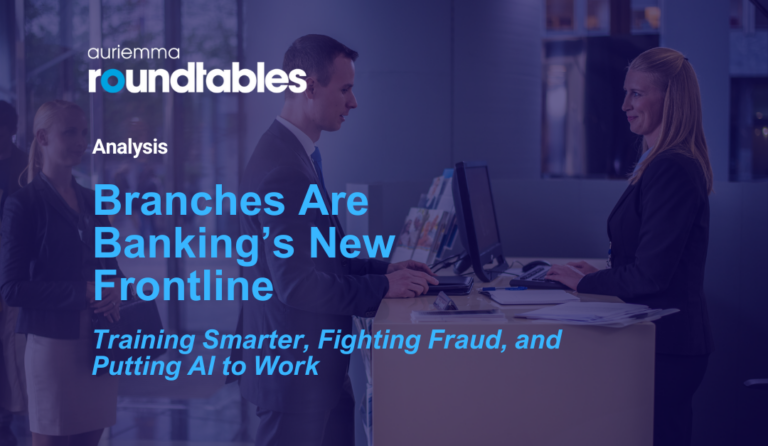May 19, 2025
It’s Never Just Technology: It’s People, Process, AND Technology
It’s Never Just Technology:
It’s People, Process, AND Technology
Introduction
We are inundated with terms like AI, claim optimization, and straight-through processing. The fact is, you can have the best strategy and plan around selecting and implementing these technologies. But if you exclude the people using the technology and how any of these technologies will change their jobs, you have already failed. It’s never just technology; it’s people, process, AND technology.
“We have used the phrase people, process, and technology in claims for years. So much so that it has just become words.”
Including end users from the beginning of the process creates buy-in and ownership in the success of the rollout of the technology.
This article presents insights from Roundtable discussions with claim executives regarding the importance of including people and processes when implementing new technology and their actions to address these issues.
The “People” Factor: Technology Doesn’t Implement Itself

Understanding User Needs and Concerns
Involving end-users early in the process helps to address their needs and concerns effectively. By involving end-users early in the process can lead to higher user acceptance and smoother claims technology adoption. Understanding user workflows, pain points, and skill levels is critical in selecting and implementing technology that fits their needs.
Organizations can identify potential resistance to change by engaging end-users from the onset and proactively addressing it. This builds empathy and trust, making users feel valued and heard. Early involvement also helps develop training programs and support structures, leading to more successful technology rollouts.
Communication and Training are Paramount
Change can be stressful for claims organizations that are already unstaffed and overworked. CATs, vacations, and unexpected staffing shortages will continue regardless of the best-planned project schedule.
Therefore, providing clear and consistent communication about the new technology’s purpose, benefits, and timelines is important. It is crucial to convey why the technology is being implemented and how it will improve current processes and outcomes. This transparency helps manage expectations and reduce resistance among users.
Providing regular updates and addressing concerns promptly can help maintain involvement and preparedness for the transition. By keeping the lines of communication open, organizations can build trust and drive smoother adoption of new technology.
Mention ongoing support and resources for users post-implementation. Ensuring the long-term success of new technology within claims organizations requires ongoing support and resources.
This includes offering help desks, regular check-ins, updates, and creating detailed documentation and user guides. Organizations can promptly address issues or concerns by establishing a robust support system, thereby minimizing disruptions and fostering a positive user experience.
Offering ongoing training opportunities can help users stay up-to-date with technological advancements or changes, ensuring they can fully leverage its capabilities.
Leadership and Buy-in
Effective leadership support is critical for facilitating adoption and addressing challenges.
Leaders should convey the vision and advantages of the technology, instill confidence, and respond to any issues that may occur. They are responsible for fostering a culture of innovation and readiness for change, ensuring all team members are on board with the new direction.
Leaders can significantly reduce resistance and facilitate smoother transitions by actively engaging with employees, providing necessary resources, and demonstrating commitment to the technology’s success. Moreover, strong leadership can help identify and mitigate potential challenges, thus paving the way for a more efficient and effective adoption process.
The “Process” Factor: Technology Enables, Processes Define

Analyzing Existing Workflows
Disrupting the workflows or processes of any organization is one of the biggest challenges of implementing new technologies.
Stress the need to thoroughly understand current processes before introducing new technology. This involves analyzing workflows to find strengths, weaknesses, and improvement areas.
Organizations can ensure that the new technology enhances efficiency and productivity by understanding how tasks are currently performed rather than disrupting operations. Additionally, this analysis helps pinpoint processes that may require redesign or optimization to better align with the capabilities of the new technology.
Interacting with employees at various levels to collect insights and feedback is essential in this stage, as they have knowledge of daily operations and can help identify areas of concern or opportunities for improvement.
Discussing the risk of automating inefficient claim processes is crucial when implementing new technology. Organizations may inadvertently embed existing flaws into their new systems without thoroughly analyzing and understanding current workflows, leading to compounded inefficiencies.
Claims automation should not merely replicate the status quo but aim to optimize and improve processes. Therefore, scrutiny and redesign of workflows are essential to ensure that the technology enhances overall productivity and does not perpetuate existing issues.
Organizations can achieve a smoother transition by identifying and addressing inefficiencies before automation and fully leveraging the benefits of new technological solutions.
Designing New Processes for the Technology
Emphasize the opportunity to re-engineer processes to leverage the full capabilities of the new technology. This involves understanding and mapping out current workflows and assessing them critically to identify areas ripe for improvement. Help employees understand that by redesigning processes to align with the latest technology, organizations can remove inefficiencies, introduce innovative practices, and enhance productivity.
Integration and Compatibility
When implementing new technology, ensuring its integration with existing systems and processes is critical. This involves a comprehensive analysis to identify potential compatibility issues and data silos that could hinder the successful deployment of the technology.
Organizations can align the new technology with current workflows by designing a clear integration strategy that optimizes performance and productivity. Furthermore, effective integration minimizes disruption, facilitates smoother transitions, and maximizes the benefits of technological advancements.
Overall, a well-planned integration strategy is paramount to leveraging new technology’s full potential within an organization.
The Synergy: People, Processes, and Technology Working Together
Neglecting either people or processes can undermine the success of even the most cutting-edge technology.
For instance, if staff are not adequately trained or engaged in the implementation phase, resistance and misuse can occur, preventing the technology from reaching its full capabilities.
Similarly, if the processes are not optimized to take advantage of the technology’s features, inefficiencies and bottlenecks can persist, nullifying the benefits that the new system could bring. Therefore, it is imperative to maintain a balanced and integrated approach where technology, processes, and people synergistically work together.
The iterative nature of a successful implementation
Feedback from people informs process adjustments, which in turn optimize technology use. Successful implementation relies on ongoing feedback and adaptation.
By gathering feedback from daily users of the technology, organizations can determine areas needing improvement and make adjustments to enhance functionality and user experience. Input should include not only home office staff but also claims staff in field offices, independent adjusters, and TPAs.
This approach ensures technology meets users’ needs and promotes staff ownership and accountability. As the processes are fine-tuned based on this feedback, the technology’s capabilities can be leveraged to their fullest extent, leading to sustained efficiency, productivity, and overall satisfaction.
The long-term benefits of this holistic approach
The long-term benefits of this holistic approach include:
- Increased efficiency
- improved user satisfaction
- Better data insights
- A more substantial return on investment.
Organizations can create a resilient and adaptive framework capable of meeting evolving challenges by ensuring that technology, processes, and people work together in harmony. The collaborative synergy enhances operational workflows and empowers employees to embrace and optimize technological advancements.
Consequently, this leads to a culture of continuous improvement, where feedback loops drive the refinement of processes, ultimately maximizing the capabilities of the technology and delivering sustained value to the organization.
Create Small End User Groups
Small end-user groups create engagement, get early buy-in, and expose potential issues that management may not be aware of.
By forming these groups, organizations foster a collaborative environment where end users can share their insights and experiences, contributing to refining the technology and processes. Early involvement assists in identifying and addressing challenges or concerns, facilitating smoother implementation and acceptance of the new system.
Additionally, the feedback collected from these groups can contribute to making informed decisions and adjustments, thereby improving the effectiveness and success of the technology integration.
Perform a complete process review to understand the best place to implement the technology in the claims process
Organizations should undertake a comprehensive review of existing processes to fully realize the potential benefits of technology within the claims process. This review aims to identify the optimal stages to implement new technology, maximizing its impact on efficiency and accuracy.
By understanding where technology can most effectively be integrated, organizations can establish clear metrics for measuring return on investment. This strategic approach ensures that technology is utilized most beneficially and provides a framework for continuous improvement and refinement. By leveraging data and insights from this thorough review, organizations can make informed decisions that enhance overall operational performance and drive long-term success.
Lessons Learned
Implementing technology successfully involves both the users and the affected processes, not just the technology itself.
Claim leaders agree that when embarking on new technology implementations, they prioritize user involvement, invest in training, analyze and adapt processes, and foster strong leadership support.
By focusing on both people and processes in addition to technological capabilities, it is possible to create effective, sustainable, and impactful solutions to improve efficiency with a greater return on investment for claims organizations.
To learn more about how Auriemma Roundtables for P&C Claims members discuss this and other topics of shared interest with their peers, visit our Insurance Groups website page.



